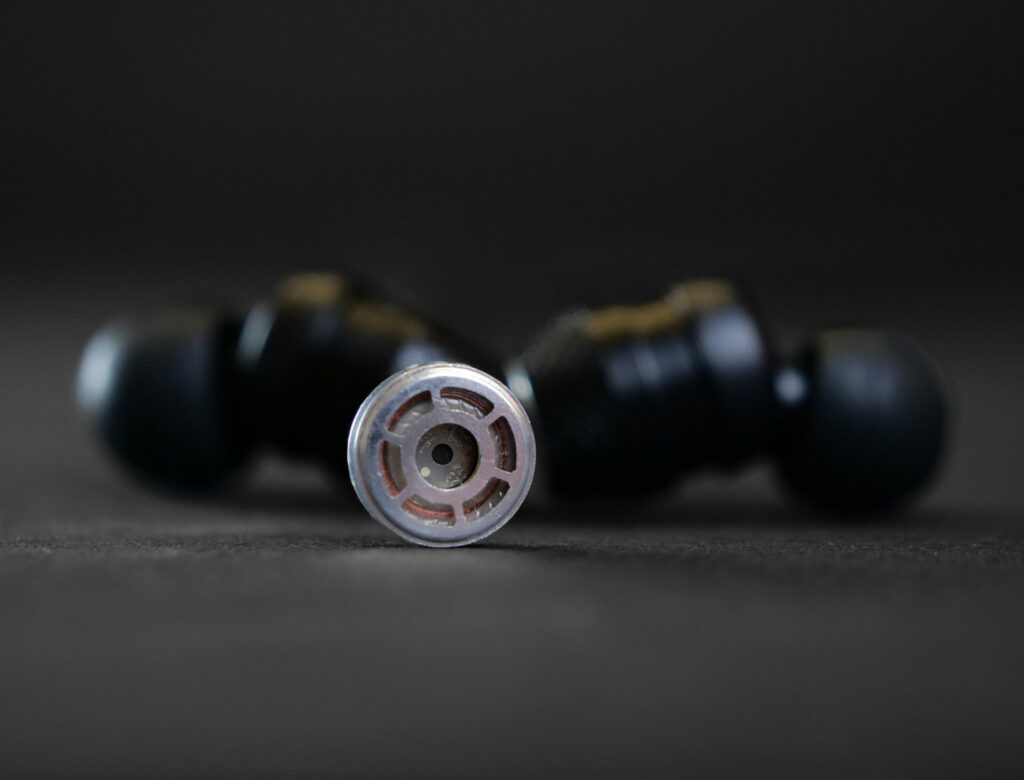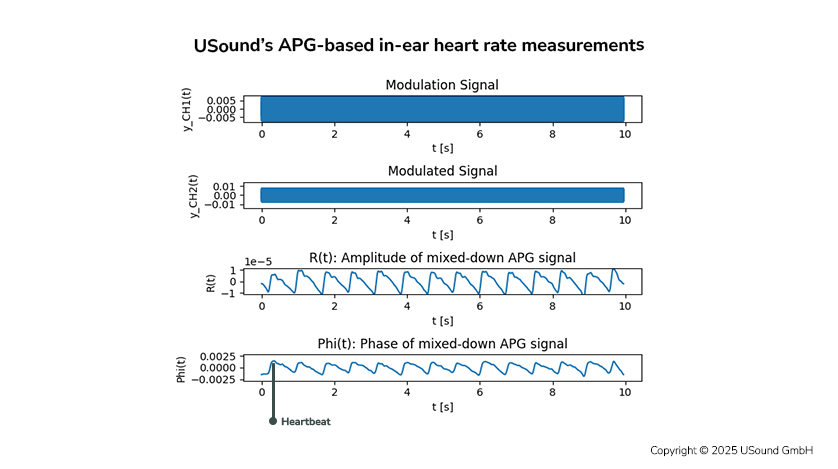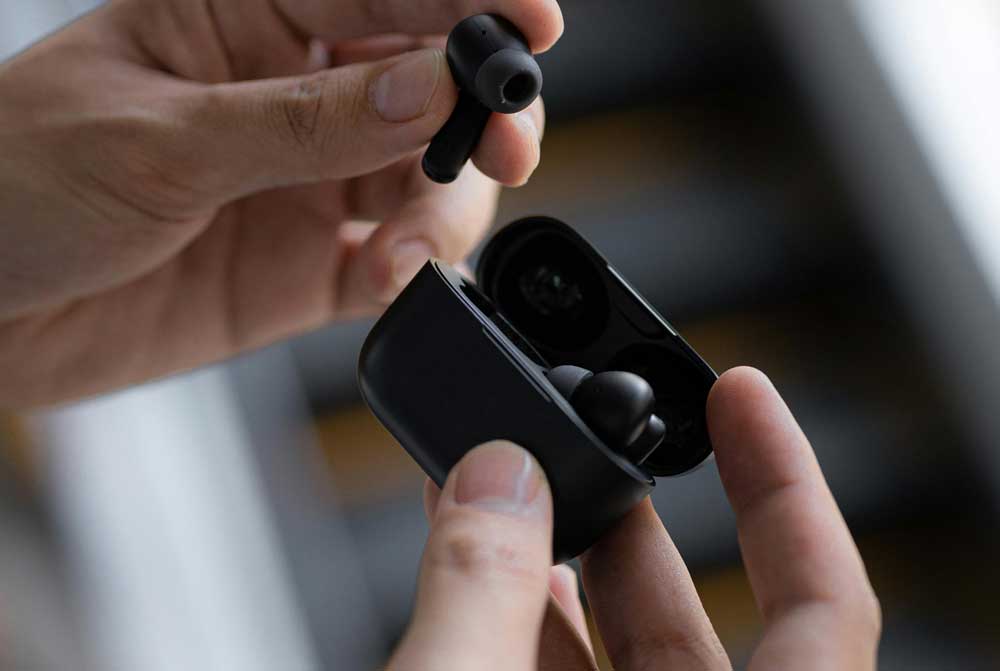Around a decade ago, listening to music while on the move meant major compromises. Cables between the source and the earphones were still the norm. Back then, “wireless” still meant a cord connecting the two earbuds behind the ears or wearing bulky headbands and neck straps to house the batteries and electronics. The only improvement was that they didn’t need to be physically connected to your mobile device. Early Bluetooth headsets were inconvenient and mono, not meant for music playback. The freedom and flexibility we take for granted today with the introduction of True Wireless Stereo (TWS) earbuds simply didn’t exist yet.
Although some startups had begun experimenting as early as 2014, the scene truly changed in 2016 when Apple successfully eliminated the last wire and introduced the AirPods. No wires, a sleek charging case, and instant pairing to iPhones. For some, it seemed like a glimpse into the future, but for many, it was more like the next unnecessary tech gadget. Since Apple was the only major brand entering this segment at the time, people questioned whether this was merely a show of strength for Apple users or if it truly marked the start of a new era in the earbud market.
Customer concerns and complaints primarily centered on connectivity and syncing issues, battery life, and sound quality. Many questioned whether these initial hurdles would stop the technology from spreading.
Fast forward, just a few years, and the TWS earbuds have taken over the market. From budget brands to high-end market players, TWS has evolved from a niche product into a market necessity. Today, it’s virtually impossible to launch a wired audio product and expect to capture a significant share of the consumer electronics space.
Shortly after the release of the first AirPods, flagship smartphones began to remove the headphone jack, a move led by Apple and mirrored by nearly all of its competitors. Phones are no longer shipped with the once-standard wired earphones, and the industry leaped forward into the wireless future. With over 300 million TWS devices shipped in 2023, this category has become the next battleground for major consumer electronics brands.
While many brands have since entered the TWS space, Apple truly set the benchmark. With AirPods, they didn’t just launch a product; they defined the segment. Apple continues to dominate global TWS sales to this day, shaping consumer expectations and forcing the entire industry to catch up in terms of design, usability, and technical integration.
A similar evolution occurred with Active Noise Cancellation (ANC), which is enabled by batteries housed in TWS devices. Once a high-end feature found only in premium over-ear headphones and surrounded by health concerns, Active Noise Cancellation (ANC) has become a must-have specification even in sub-$100 earbuds. Consumer expectations now include Adaptive Noise Cancellation (ANC), transparency mode, and wear detection as standard features.
TWS started as a convenience. It’s now an expectation. The next leap? Making earbuds as intelligent and insightful as the devices they connect to. Are we ready for that?
As TWS earbuds evolve, customer expectations around sound quality are rising rapidly. There is only one solution to serving the increasing demand for better audio fidelity: 2-way systems.
Why are 2-way systems necessary?
Today’s TWS earbuds are loaded with features. That means the single speaker inside must balance fidelity, battery life, ANC performance, and even Hi-Res audio compliance. A one-size-fits-all driver is inevitably a compromise. Manufacturers are often forced to choose which performance areas to prioritize at the expense of others.
By separating the speaker into a dedicated woofer and tweeter, each component can be designed to handle a specific frequency range without compromising the performance of the other. This turns a generic speaker into a purpose-built feat of engineering, optimized to deliver consistent performance across all use cases with the least number of compromises.

This is exactly what USound delivers; not just a tweeter for 2-way systems, leaving the integration up to the customer. In collaboration with OBO Pro.2, a fully integrated, plug-and-play dual-speaker audio module, Greip 1.0, was created.
In Greip, the woofer can be optimized for bass response, precise Active Noise Cancellation (ANC), and leakage tolerance. The Conamara MEMS tweeter, on the other hand, delivers crisp, high-frequency reproduction and enables Hi-Res audio capabilities.
Will the next generation of TWS earbuds simply sound better?
There has to be more, and indeed, there is. With the Powerbeats Pro 2, in-ear heart rate monitoring entered the flagship arena, brought to market by none other than Apple. This marks another significant turning point: major players are now exploring smart sensing capabilities within earbuds. But while this novelty opens exciting new possibilities, it’s also raising new concerns.
Objections Always Come First
Just like TWS faced skepticism in its early days, the idea of health monitoring through earbuds is also met with hesitation. Consumers raise concerns about data privacy, measurement accuracy, and the comfort of wearing biometric sensors in the ear. Others question whether these features are truly useful or merely another layer of technology for the sake of technology. But history shows that initial resistance often gives way to expectation, especially when the benefits become seamless, unobtrusive, and genuinely useful.
The One-Stop Shop for Smart TWS Earbuds
That answer also lies within Greip 1.0, specifically in the Conamara tweeter. As explored in earlier articles, Conamara is exceptionally capable in the ultrasound frequency range. What we haven’t shared in detail yet is that it can emit precise ultrasound and audible signals simultaneously. This property transforms 2-way systems, incorporating Conamara into sensory powerhouses. By emitting ultrasound and receiving its reflections with the already on-board feedback microphone, Conamara enables wear detection, heart rate monitoring, and other biometric features, all without adding any extra components.

In future TWS devices, the speaker won’t just play music but power the intelligence that transforms earbuds into smart wearables. Becoming active participants in the smart device ecosystem.
From Sound to Sense
True Wireless Stereo earbuds have already reshaped how we consume audio. The next revolution will redefine what earbuds actually are.
As components like USound’s Greip 2-way audio module merge sound engineering and sensing technology, TWS devices can now evolve from accessories into multifunctional smart wearables. This shift, from simple playback devices to intelligent, sensor-enabled wearables, is driven not by traditional audio components but by USound’s breakthrough MEMS speaker and software solutions. The line between audio and health tech is blurring, and the brands that recognize this shift will define the future of personal audio.

Kristóf Dornbach
Kristóf Dornbach is inspired by the challenge of turning technological potential into practical reality. As Product Manager at USound, he applies his strategic mindset and technical expertise to deliver impactful solutions in a dynamic market.


